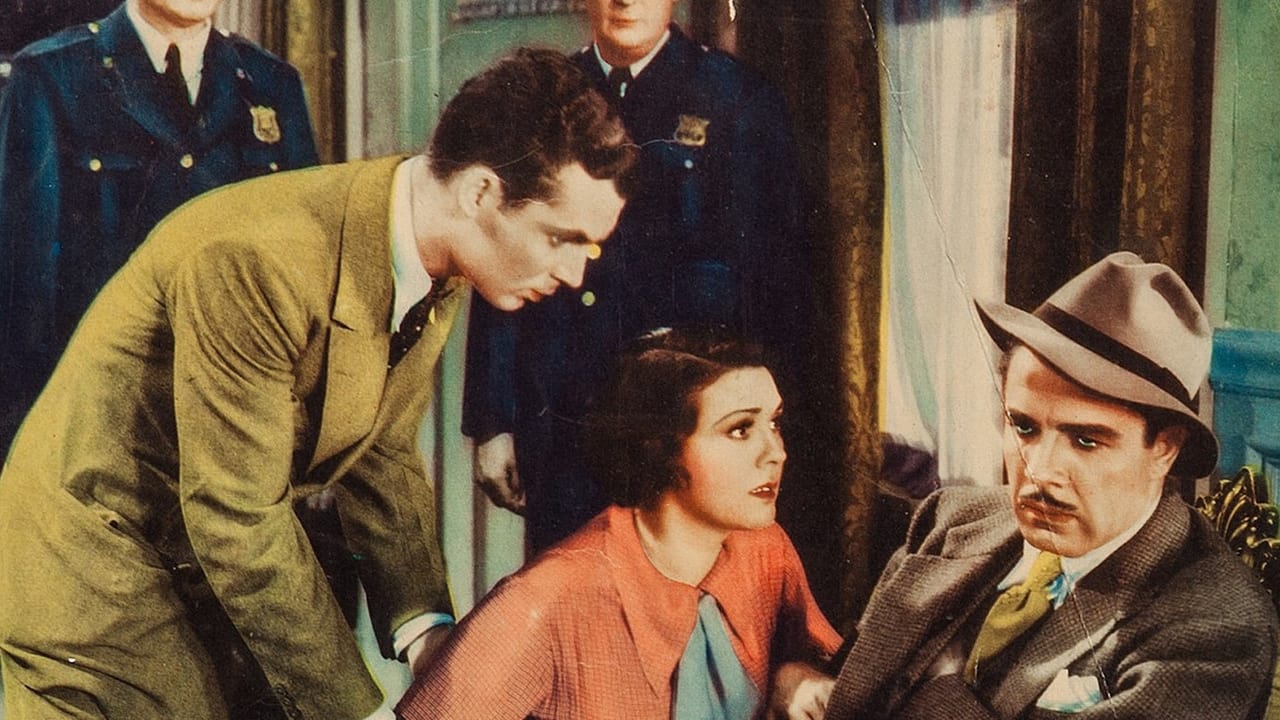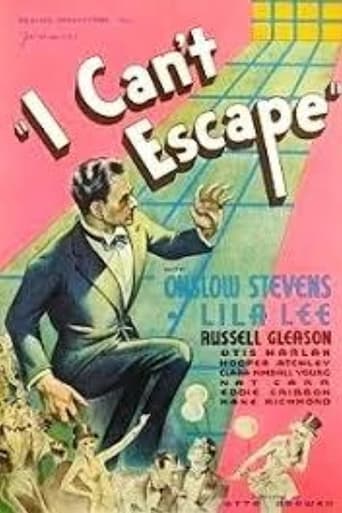

Onslow Stevens (Steve Nichols), Lila Lee (Mae), Russell Gleason (Tom Martin), William Desmond (Donovan, parole officer), Hooper Atchley (Harley, the broker), Otis Harlan (Bonn, the partner), Richard Cramer (Joe, the bartender), Kane Richmond (Bob, a college boy), Clara Kimball Young (Mrs Wilson), Eddie Gribbon ("legal" cop), Nat Carr (Watson).Director: OTTO BROWER. Screenplay: Faith Thomas. Story: Jerry Sackheim, Nathan Ash. Photography: Jerome Ash. Film editors: Frederic Knudtson, Louis Sackin. Art director: Fred Preble. Production manager: Sam Wiesenthal. Assistant director: Charles S. Gould. Associate producer: Peter Kassler. Producer: Max Alexander. Not copyright by Beacon Productions, Inc. U.S. release: 5 July 1934. U.K. release: 5 January 1935. Never theatrically released in Australia. 60 minutes.SYNOPSIS: Paroled convict settles down to domestic bliss with a good-time girl he meets in a nightclub. Unfortunately, due to harsh parole regulations, he is unable to find a job until he is hired by a couple of investment brokers, who are actually swindlers whose knowledge of the law is so slight they innocently presume the police will pin the rap on the convict when they abscond with the proceeds of their trust fund. COMMENT: In two words: supremely boring. Any hope that Mr. Brower, a noted action and 2nd unit specialist, is going to show off those aspects of his talent are quickly dashed. All we get are a couple of shots of speeding cars and a mild melee at a nightclub. The talent-less direction is compounded by nondescript players and minimal production values. True, the screenplay has a few harsh words to say about parole rules, but they are lost in the movie's relentless atmosphere of penury.
... View MoreThis earnest little quickie has the usual opening sequence in a nightclub and a climax set at an airfield to end the film with a wallop, and in between contrives to take a sober look at the problems faced by a young Onslow Stevens as an ex-con out on parole without references. It's sufficiently compelling to have you wondering how on earth its increasingly involved plot can possibly be resolved happily, and manages a conclusion that is contrived but satisfying. Released just days after the introduction of the new Production Code at the beginning of July 1934, it still retains the cheerful amorality and social conscience of that lost era, with the profession of the faded but still gorgeous Lila Lee being immediately obvious.
... View MoreThis film treads a very fine line as far as the production code goes. The code became enforced on the 13th June, 1934 with the provision being that any film released after 1st July had to follow a strict code of conduct - so there would be no more "Baby Face", "Millie" - even "Betty Boop" had to cover up!!! Maybe the fact that it was released by obscure Beacon Pictures may have been the reason it sneaked through on the 5th of July. By 1934 films were starting to look to wholesomeness and family values - Lila Lee's earlier film was "Stand Up and Cheer" featuring a future star who would lead the purity parade - Shirley Temple!! But in "I Can't Escape" Lila played a prostitute! In fact it is obvious in this film that she and Steve are living together and when he first goes back to her flat he tries to give her money and she says something like "another time, when I've earned it" - a shocking plot line even for the early thirties!Things have changed since Steve Nichols (Onslow Stevens) has been "inside" - for one thing liquor is now legal and when "good time girl" Mae (Lila Lee) is sent to his table by mistake he realises that even free people have their own prisons. This is a compelling look at how hard it was in the depths of the depression to go straight - once you had a prison record. As one hirer says "It's hard enough to place men with references"!! Of course everything is tidied up in under an hour, still it was a brave effort by a little poverty row studio to attempt to highlight an unsung problem.References are something that all the money in the world won't buy for Steve. He and Mae have decided to make a go of it together and after much wearing out of shoe leather, he finally scores the demeaning job of a billboard man. Just as he is about to give up hope he is suddenly employed by a pair of investment brokers - they know of his past but they are planning their own "dirty deed" and need an unsuspecting fall guy - exactly what he was in prison for in the first place!! He foolishly doesn't question their willingness to employ him - he just knows he has been given a rare chance to make good!!The same night, a young man, Thomas Martin, arrives on their doorstep: he is looking for Steve Nichols (who he has never seen) the man he feels is responsible for his father's death by selling him phoney stock. Steve, who does feel responsible - even though he was just as much in the dark, wants to keep Tom at the flat so his new job isn't jeopardized. The crunch is soon coming - the shonky investors have found a grieving widow (Clara Kimball Young) and want Steve to convince her to invest her life savings in the firm - the crooks can then collect and leave Steve to face the police alone.Back on the home front, Mae is fighting off the love struck kid's advances but does she make the ultimate sacrifice to see that Steve has a free hand to chase down the baddies before they board the plane?Onslow Stevens is great as usual - with his rugged handsomeness and beautiful smooth speaking voice he had the goods to be a threat to Clark Gable - just maybe not the charisma. Charles King's name is on the credits but I can't find him in the movie as all the actors are accounted for, right down to old silent favourite Willam Desmond as the kindly parole officer.
... View MoreThis is a low-budget B-movie—and an interesting one at that. What I mean by the term 'B-movie' is that it's a film that was designed as a second and lesser film in a double-feature. Like so many of them, this film was made by a tiny independent studio.Steve Nichols is a man who was just released from prison on parole. He claims that he was set up for a an investment fraud scheme and soon begins shacking up with a prostitute. While none of this is explicitly stated, it is easy to see that this is indeed the case. This sort of film plot is one that only could have been made before the film industry's Production Code was strengthened in 1934—as prostitution and the like are topics taboo under the new system.At first Nichols has a hard time getting a job because of his past. However, a shady investment firm offer him a job—figuring Nichols will make an excellent fall-guy! Soon after this a guy named Tom shows up looking for Nichols. His family was ruined in the original stock scheme that sent Nichols to prison—and he wants revenge. Nichols feels sorry for him and invites him to stay and even gets him a job with his new firm. In the process, Tom has no idea his benefactor is Nichols. When Tom learns that his new friend is Nichols, he assumes the worst and doesn't realize that once again Nichols is being set up for something he didn't do. When Nichols does find out, he tries to stop his bosses from absconding with the money.I know this all sounds very confusing—and it is. Perhaps the film could have used a re-write to make this all come off as a bit more believable but at least it is different. As for the acting, it's a mixed lot—some very good and some noticeably poor. While it's not a film to rush out to see, at least it's never boring.
... View More